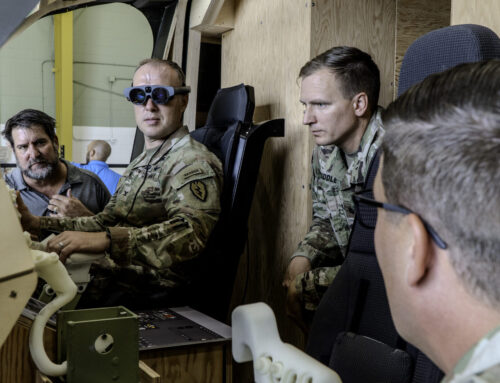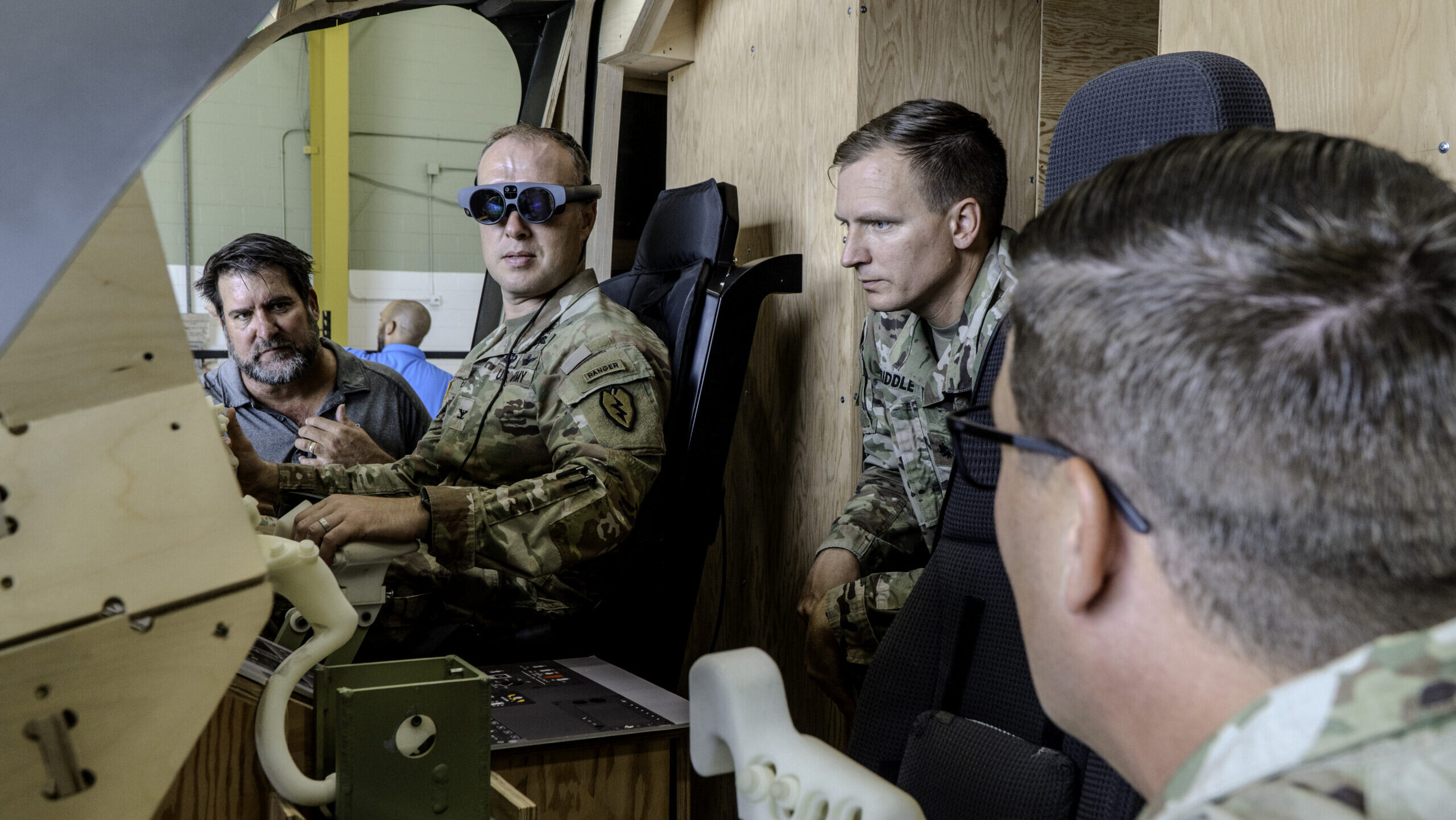Hypersonic and Ballistic Tracking Space Sensor (HBTSS). (Northrop Grumman image)
WASHINGTON — The Missile Defense Agency (MDA) has issued a call for industry ideas on how it can implement President Donald Trump’s Jan. 27 “Iron Dome for America” Executive Order — a surprisingly fast turn around on a Pentagon program.
The Request for Information (RF) comes just four days after Trump’s order mandated Pentagon development of a comprehensive “shield” to repel any aerial attack on the US homeland. The RFI asks interested vendors to show and tell relevant capabilities by Feb. 28.
The request to industry is structured to be open to a wide range of ideas, as it seeks details on what capabilities can be “delivered or demonstrated” in two-year “epochs”: not later than Dec. 31, 2026; Dec. 31, 2028; Dec. 31, 2030 and “beyond” Dec. 31, 2030.
MDA is “conducting market research to assist in the identification of innovative missile defense technologies (system-level, component level, and upgrades) architectures, concepts, and Concept of Operations (CONOPS) to detect and defeat the threat of attack by ballistic, hypersonic, and cruise missiles, and other advanced aerial attacks,” the RFI elaborates.
“MDA desires to collaborate with Industry on potential concepts to deploy and maintain a next-generation missile defense shield that will deter and defend its citizens and critical infrastructure against any foreign aerial attack on the Homeland and guarantee its secure second-strike capability,” it adds.
The list of technologies of interest reads as a cut-and-paste of the Trump executive order:
- Defense of the United States against ballistic, hypersonic, advanced cruise missiles, and other next-generation aerial attacks from peer, near-peer, and rogue adversaries;
- Acceleration of the deployment of the Hypersonic and Ballistic Tracking Space Sensor layer;
- Development and deployment of proliferated space-based interceptors capable of boost-phase intercept;
- Deployment of underlayer and terminal-phase intercept capabilities postured to defeat a countervalue attack;
- Development and deployment of a custody layer of the Proliferated Warfighter Space Architecture;
- Development and deployment of capabilities to defeat missile attacks prior to launch and in the boost phase;
- Development and deployment of a secure supply chain for all components with next-generation security and resilience features; and
- Development and deployment of non-kinetic capabilities to augment the kinetic defeat of ballistic, hypersonic, advanced cruise missiles, and other next-generation aerial attacks.
Interestingly, the RFI indicates MDA would take charge of deploying the Hypersonic and Ballistic Tracking Space Sensor (HBTSS), rather than the Space Development Agency (SDA). The fate of the HBTSS — which uses a medium-field-of-view camera optimized to provide high-fidelity missile tracking capable of providing targeting coordinates to anti-missile interceptors — has been the subject of a years-long tug-of-war between the two agencies.
MDA originally developed the sensor to help target its new Glide Phase Interceptor for knocking hypersonic missiles out of the sky. But SDA effectively killed the HBTSS program after the first two test satellites were launched last February, absorbing some of the technology into its own designs for new “fire-control capable” infrared sensors.
Thus, the Trump executive order breathes life back into the HBTSS program, and MDA has re-claimed control of it in the RFI.
As things stand today, however, SDA has no plans to integrate the two HBTSS sensors into its Tracking Layer of the Proliferated Warfighter Space Architecture — which begs the question of once HBTSS is developed how will it be deployed and operated so as to work with SDA’s Tracking Layer satellites and ground systems?
Another unanswered question is which Defense Department organization will operate the future space-based and directed-energy interceptors to be developed by MDA as part of the Iron Dome plan.
The Ground-Based Interceptors that make up the sharp end of the Defense Department’s Ground-based Midcourse Defense System are “administered” by MDA (to include funding for upgrades) but the Army has operational control in support of US Northern Command. Further, both the Air Force and now the Space Force provide support functions to the overarching system. That long-standing arrangement also will apply to the Next-Generation Interceptor replacement program.
However, US Space Command is now responsible under the Unified Command Plan for operations in space, with its “area of responsibility” defined as extending from 100 kilometers above the Earth to, in theory, infinity. The command also serves as the Joint Force Global Sensor Manager, and operates the current Space-Based Infrared System constellation of missile warning satellites. And while the Space Force supplies the bulk of personnel to SPACECOM to conduct operations, the other services also all provide space specialists and capabilities.
The defense community may not have to wait for answers. Under the executive order, Defense Secretary Pete Hegseth has until March 28 to submit “a reference architecture, capabilities-based requirements, and an implementation plan for the next-generation missile defense shield” — a task that is being spearheaded by John Hill in his role performing the duties of the assistant secretary of defense for space policy.









